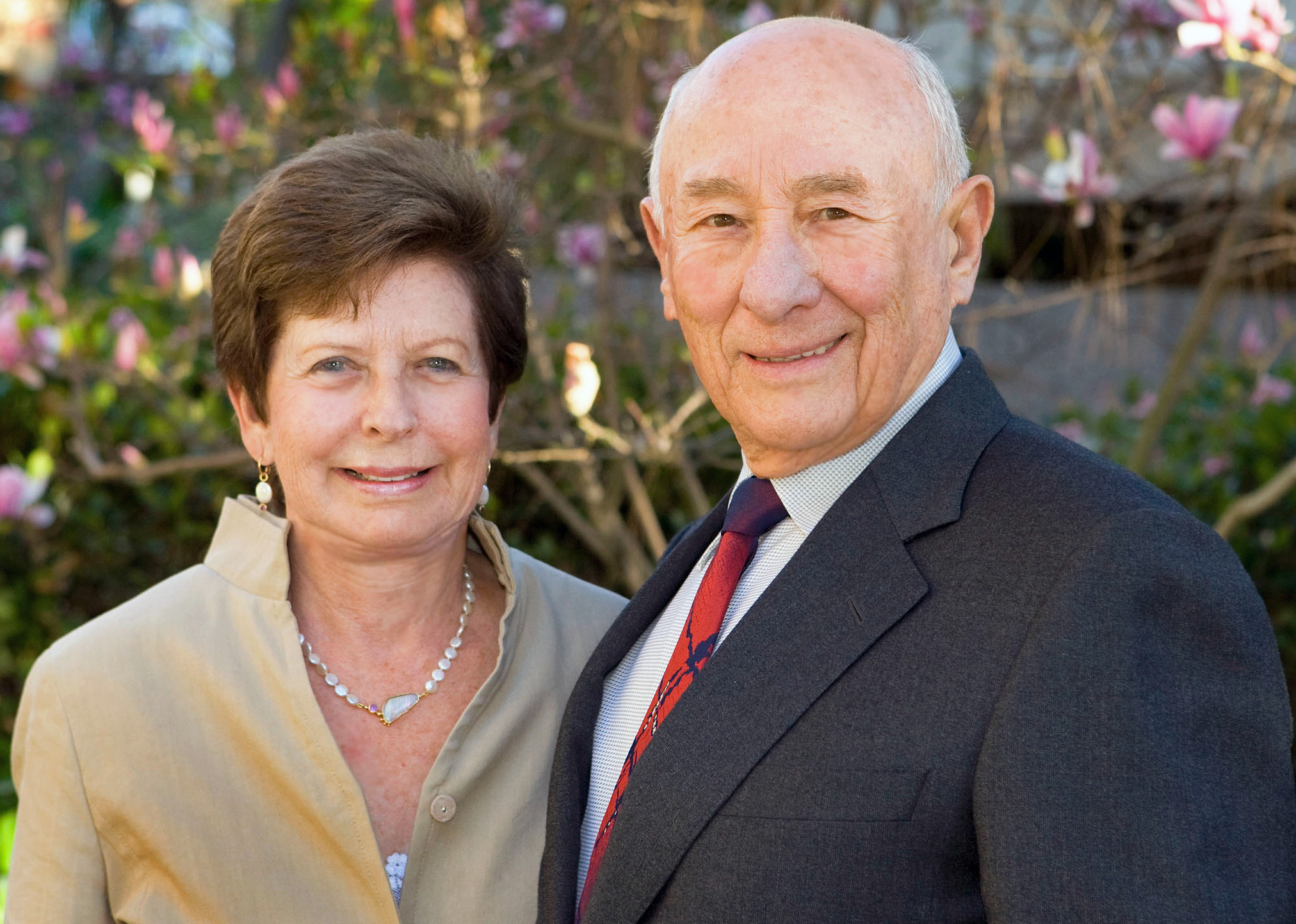Alumni Meyer and Renee Luskin donate $100 million to School of Public Affairs and the construction of controversial conference center and faculty club

Renee and Meyer Luskin donated $100 million to the UCLA School of Public Affairs and the construction of a residential conference center. (credit: UCLA)
By Sean Greene
Jan. 25, 2011 9:48 p.m.
UCLA has received a $100 million donation, the second-largest donation in the university’s history.
Alumni Meyer and Renee Luskin gave $50 million to the UCLA School of Public Affairs.
The other $50 million will go toward the construction of a residential conference center and faculty club, which will be built on the location of the current Faculty Center.
Meyer Luskin, 85, graduated from UCLA with a bachelor’s degree in economics in 1949.
Now he is the CEO of Scope Industries, a company that recycles bakery waste into an ingredient in animal feed.
The donation is meant to help attract the best professors and graduate students and to support a greater diversity of classes.
Luskin said it is important for the university to devote more resources to solving community problems, which he said are so complex that minds across many disciplines, including public policy and economics, are needed to deal with them.
“Who has the best source of those brains? The university,” Luskin said. “I think this (will create) a richer experience for the students.”
Luskin’s donation comes nine years after record executive David Geffen gave $200 million to the UCLA School of Medicine for research.
Ninety percent of Luskin’s donation to the School of Public Affairs will go toward endowed professorships, graduate student fellowships and other academic programs.
The graduate student fellowships could benefit future students for the next 50 to 70 years, said Frank Gilliam Jr., dean of the School of Public Affairs. As state support for graduate fellowships has diminished in the last few years, Gilliam said, there has been a trend of graduate students turning down UCLA for other schools that can offer them more money.
The donation will allow the School of Public Affairs to remain competitive, he said.
The other half of Luskin’s donation will help fund the proposed residential conference center and faculty club to host academic meetings on campus.
The facility will stand six stories tall when completed, and will consist of meeting rooms, conference space and almost 300 hotel rooms. It will replace the 50-year-old Faculty Center, which is one of the only single-story buildings on campus.
While construction is carried out, a temporary faculty club will be established in Ackerman Union.
The planned facility is needed for hosting overnight academic conferences that will attract scholars from around the world to UCLA, according to UCLA administrators. The conference center will generate revenue by charging visiting scholars as well as UCLA faculty who wish to use the space.
Construction costs are estimated at $160 million, with $40 million coming from the Luskin donation. The remaining $10 million from the donation will fund departments that would not otherwise be able to afford to use the facility.
The $120 million in construction costs not covered by the donation will be paid for though borrowed bond funds, said Executive Vice Chancellor and Provost Scott Waugh. No state funds will be used.
The university expects the conference center to break even in three to four years, after which revenue from the center’s operations will go toward repaying the bonds, said UCLA spokesman Phil Hampton.
But many faculty members and neighbors remain opposed to the construction of a new conference center. They voiced their concerns at a Monday night meeting called “Save the Faculty Center.”
The university is in a tough financial position, and funds should be focused on uses that will enhance UCLA’s educational and research objectives, said James Lake, a professor in the molecular, cell and developmental biology and human genetics departments.
“Spending funds like this on a conference hotel is an embarrassment, given the financial straits that the university is in,” Lake said. “We’re facing increases in student tuition, and faculty and employees that may be paid in script.”
Many faculty at the meeting said the university should consider other locations, such as Lot 36 on Kinross Avenue, to save the current Faculty Center.
The location of Lot 36 would help local businesses and restaurants because of its proximity to Westwood Village attractions, said Laura Lake, co-president of Save Westwood Village, a business revitalization group, and James Lake’s wife.
“People do not like being in isolated locations,” Laura Lake said. “They want to be able to walk to the Hammer Museum or go to the Geffen (Playhouse) in the evening and make it on foot, not take the shuttle or the bus.”
Waugh said the time is right to build the center, “while superficially, it appears like it isn’t the right time.”
He said he sympathizes with the Faculty Center members’ attachment to the building, and the administration will work to address their concerns.
Plans for a new faculty center attached to the conference center promise a larger, indoor/outdoor dining area and more meeting space, said Administrative Vice Chancellor Sam Morabito in a meeting with Faculty Center members.
Morabito emphasized in the meeting that there was “widespread consultation” with deans and Academic Senate committees about the new center.
Luskin said he was told a relatively small number of faculty opposed the conference center idea. But he said he believes the new faculty center will be a much better facility for everyone.
“No matter how outstanding something will be for the future, you are still going to have a few who object,” he said. “Is it perfect? Far from it. Is it outstanding? Absolutely.”
Luskin donated $5 million to the university to create the Luskin Center for Innovation in 2008. The center moved to the School of Public Affairs last year.
The School of Public Affairs and the conference center will be named after the Luskins. The School of Public Affairs will be renamed at a ceremony on March 18.


